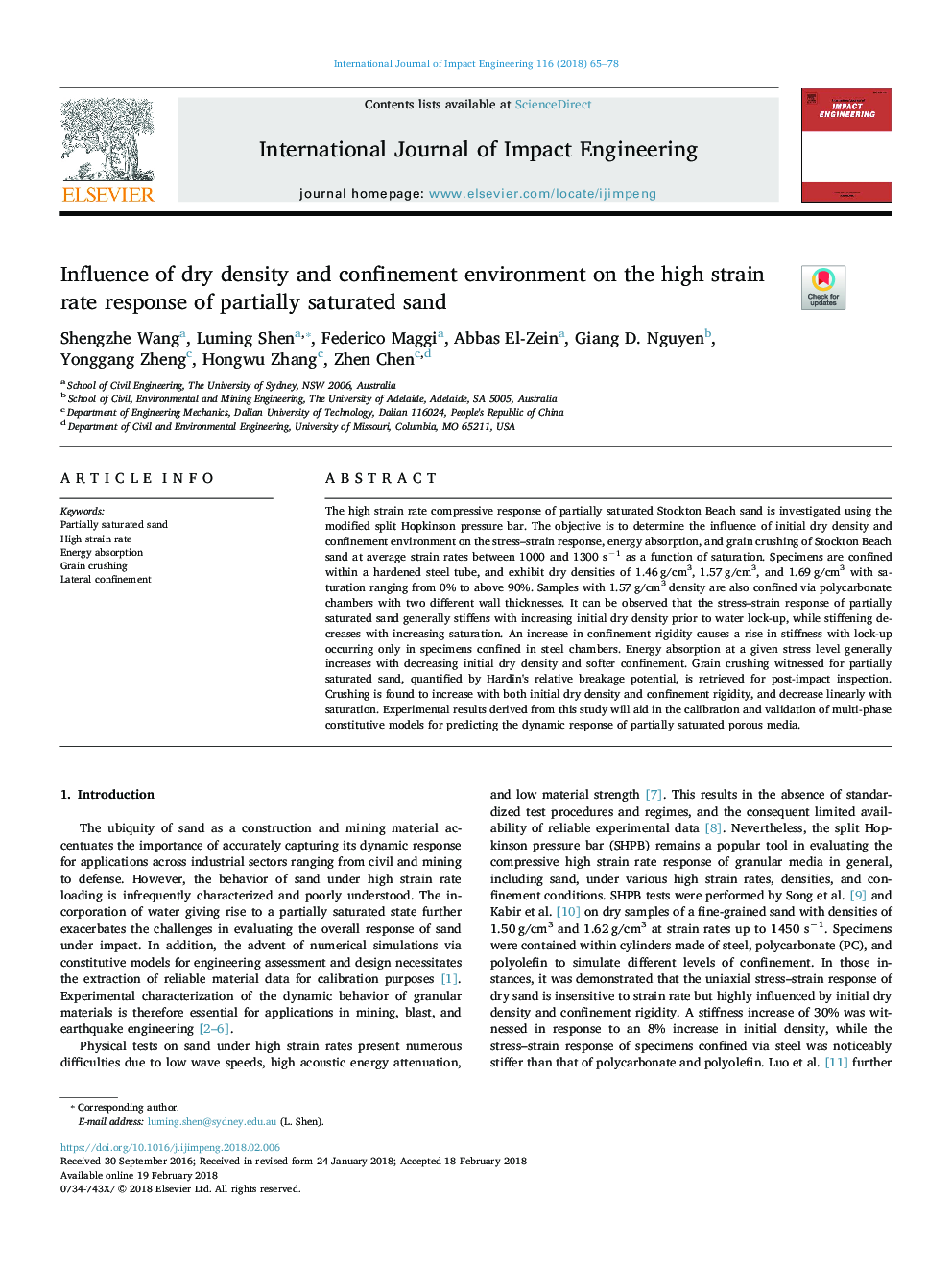| Article ID | Journal | Published Year | Pages | File Type |
|---|---|---|---|---|
| 7172942 | International Journal of Impact Engineering | 2018 | 14 Pages |
Abstract
The high strain rate compressive response of partially saturated Stockton Beach sand is investigated using the modified split Hopkinson pressure bar. The objective is to determine the influence of initial dry density and confinement environment on the stress-strain response, energy absorption, and grain crushing of Stockton Beach sand at average strain rates between 1000 and 1300 sâ1 as a function of saturation. Specimens are confined within a hardened steel tube, and exhibit dry densities of 1.46â¯g/cm3, 1.57â¯g/cm3, and 1.69â¯g/cm3 with saturation ranging from 0% to above 90%. Samples with 1.57â¯g/cm3 density are also confined via polycarbonate chambers with two different wall thicknesses. It can be observed that the stress-strain response of partially saturated sand generally stiffens with increasing initial dry density prior to water lock-up, while stiffening decreases with increasing saturation. An increase in confinement rigidity causes a rise in stiffness with lock-up occurring only in specimens confined in steel chambers. Energy absorption at a given stress level generally increases with decreasing initial dry density and softer confinement. Grain crushing witnessed for partially saturated sand, quantified by Hardin's relative breakage potential, is retrieved for post-impact inspection. Crushing is found to increase with both initial dry density and confinement rigidity, and decrease linearly with saturation. Experimental results derived from this study will aid in the calibration and validation of multi-phase constitutive models for predicting the dynamic response of partially saturated porous media.
Related Topics
Physical Sciences and Engineering
Engineering
Mechanical Engineering
Authors
Shengzhe Wang, Luming Shen, Federico Maggi, Abbas El-Zein, Giang D. Nguyen, Yonggang Zheng, Hongwu Zhang, Zhen Chen,
